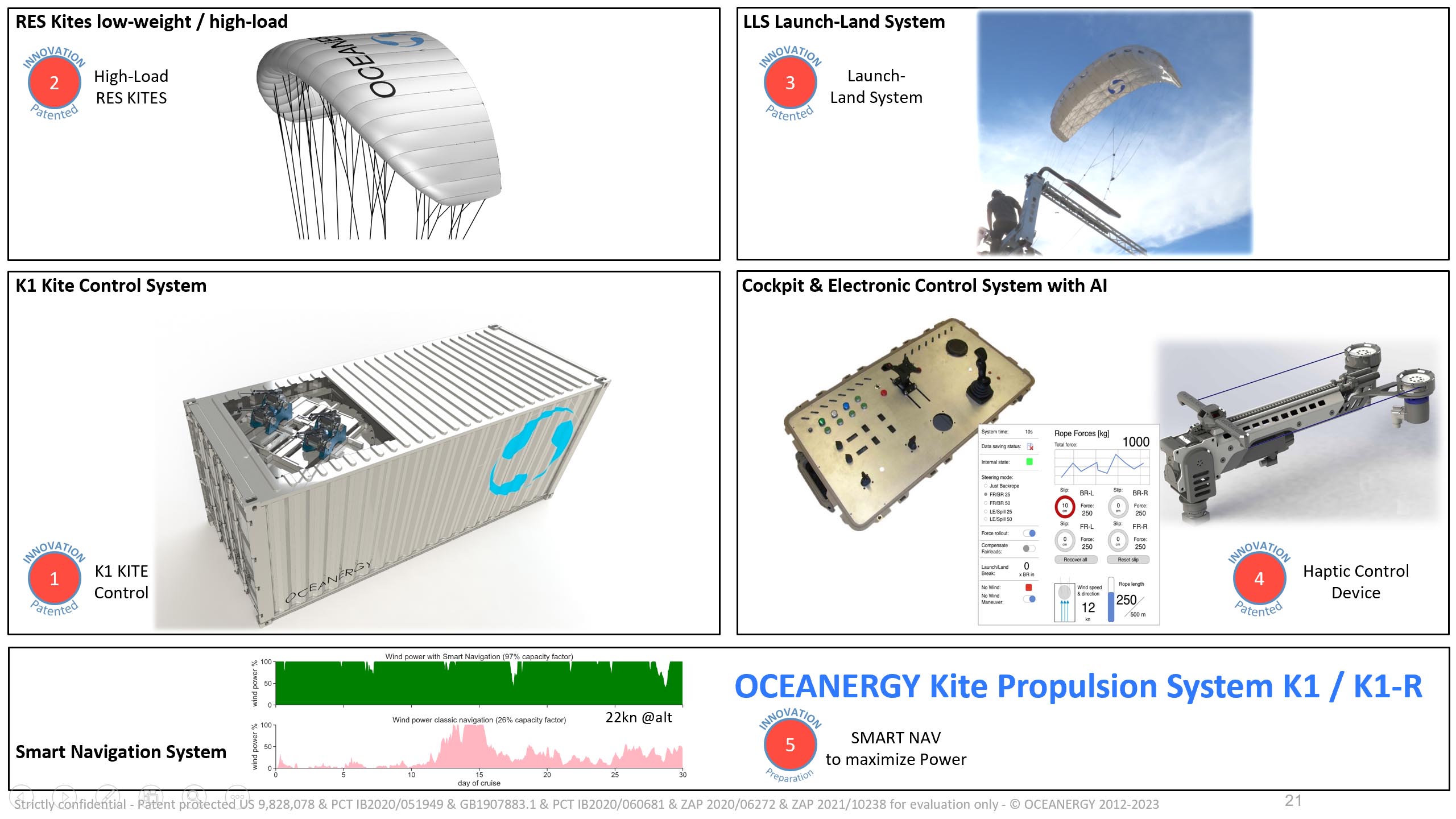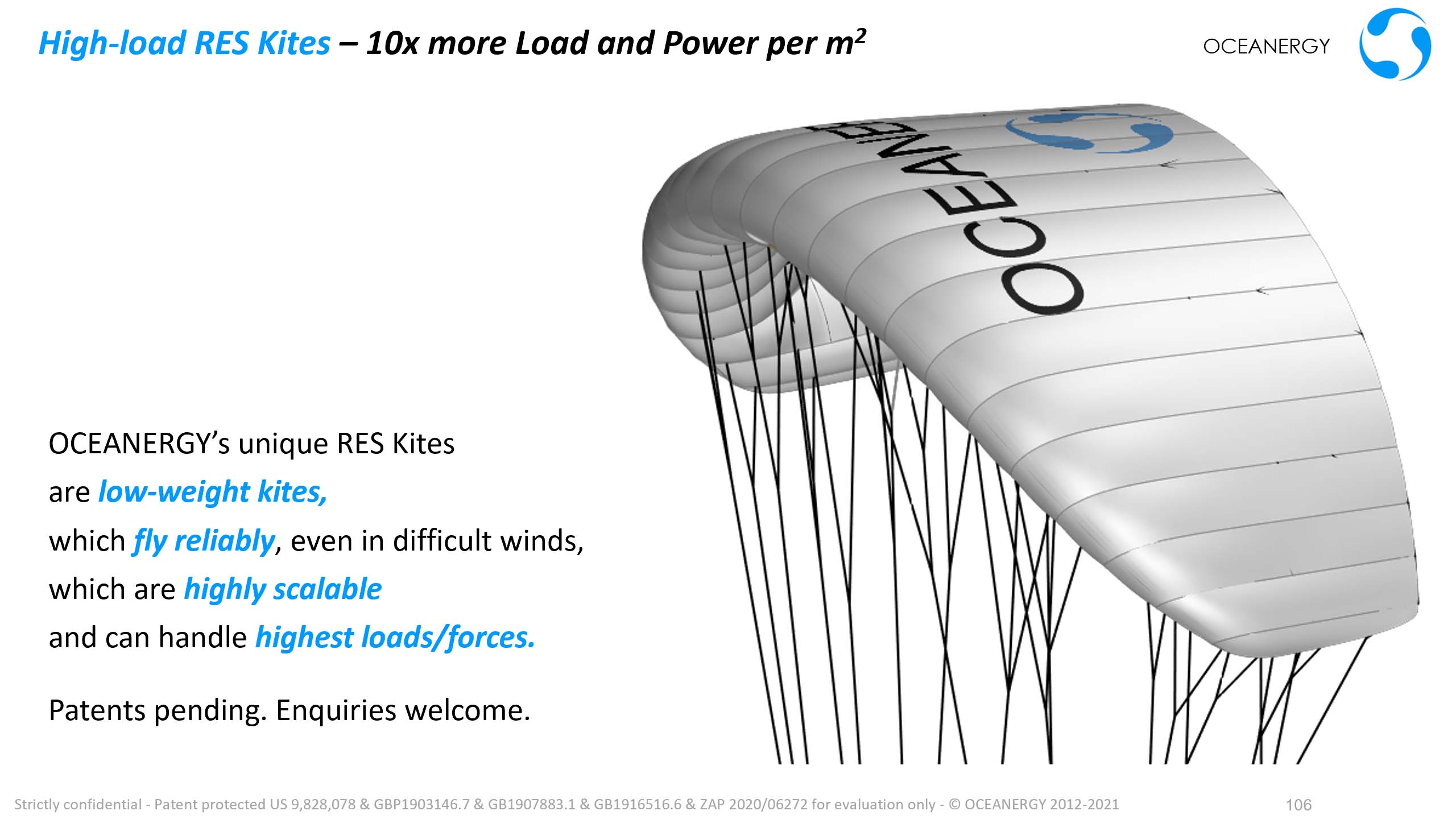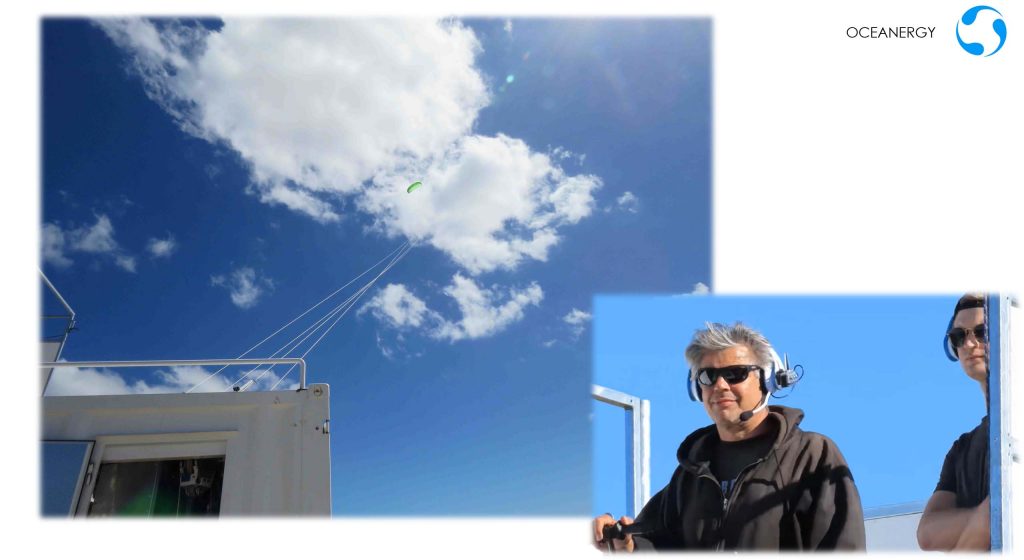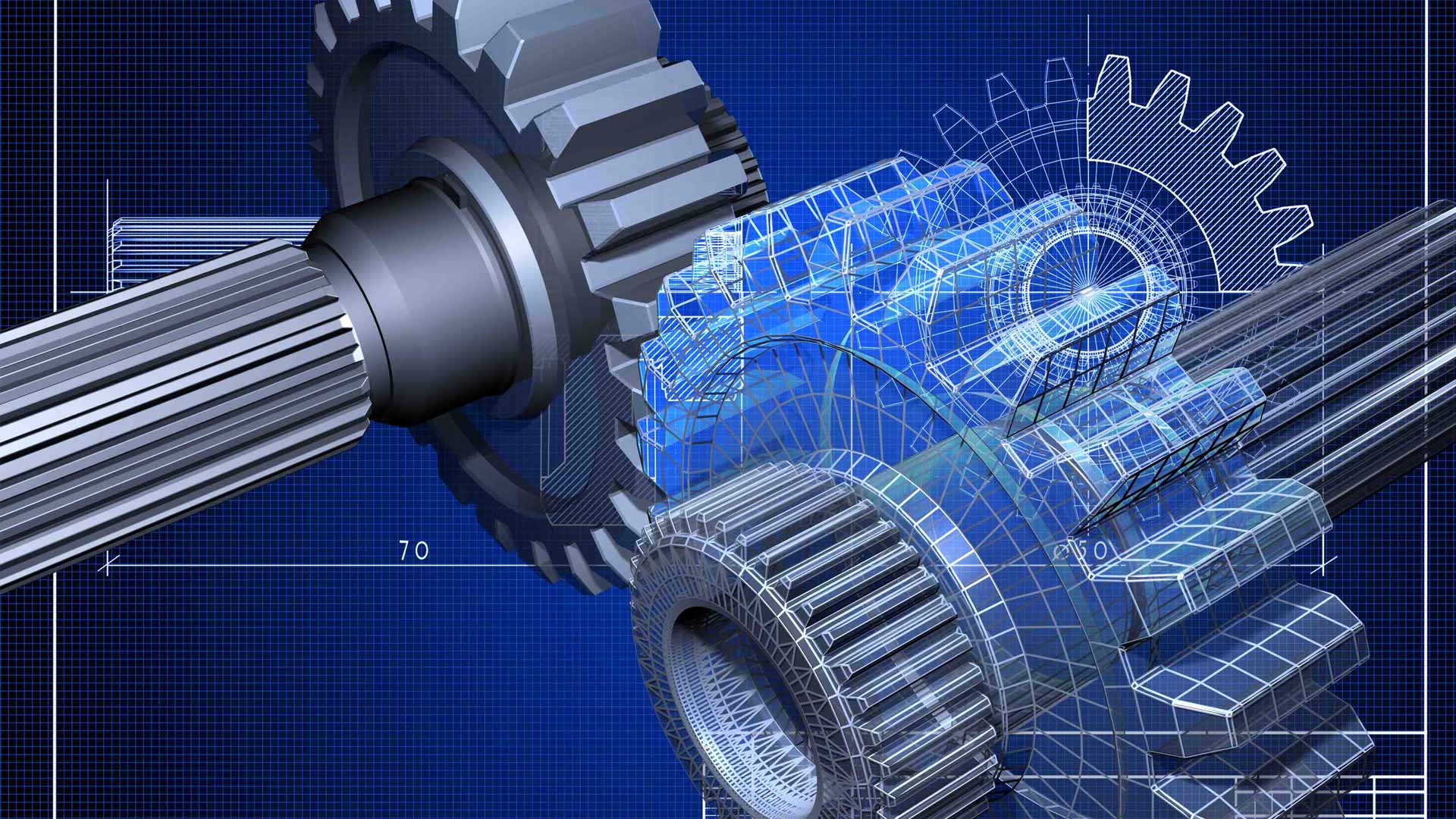The K1 Kite Propulsion system for Energy Ships
OCEANERGY has designed the K1 Kite Propulsion system for ships – as the main propulsion system. A LIGHT version is already commercially available, the K1-R, with less power. The full K1 will become available 2024/25.
The K1 allows to fully navigate ships on all wind courses, upwind (close reach) and downwind (broad reach), including changes of direction. An auxiliary electric propulsion system is only used as an emergency back up and to navigate close to harbors.
The K1-R produces propulsion. It can be indirectly transformed into electricity, e.g. with tow generators or with electric propulsion in reverse mode. The full K1 produces electricity directly. Currently the K1-10 V2.0 produces 360 kW and the system is upgrade-able to K1-20 V3.0 with 1 200 kW.
By 2026 a 20 MW system is in planning, with the option to upgrade to 55 MW.
The K1 Kite Propulsion system consists of five sub-systems.

Kite Propulsion System K1
The K1 is unique and designed for maximum power and minimum operation cost. The K1 can operate highest traction loads and therefore power by the kite. These will eventually transform into maximum green electricity and hydrogen output on board.
The K1 Kite Propulsion system is protected by a portfolio of granted and pending patents.
Our K1 Products
Purpose: Traction, research Electric. Auto pilot. 32 kN traction. Air cooling. Fully integrated architecture. Completed and In operation since 2020 (V1.0) 2021-22 (V1.3) 2022-23 (V1.5) K1-10 V2.0 a
Purpose: Traction, H2 production Electric. Auto pilot. 160 kN traction. Water cooling. 360 kW electricity production. Open architecture. Design complete; in assembly. Upgrade-able to V3.0 K1-18 V3.0 a
Purpose: Traction, H2 production Electric. Auto pilot. 640 kN traction. Water cooling. 1.2 MW electricity production. Open architecture. Design complete; in preparation. K1-R V1.7 i
Purpose: Motor yacht propulsion Electric. Auto pilot. 10 kN traction. Fully integrated architecture. Transocean crossing. House load battery charging. Product in final endurance tests. K1-R V2.7 a
Purpose: Motor yacht propulsion Electric. Auto pilot. 40 kN traction. Open architecture. Transocean crossing. House load battery charging. Product in final endurance tests. K1-R 10 QUADRIGA m
Purpose: Electric motor boat propulsion Manual. 10 kN traction. Range extender. Battery charging. Product in preparation. K1-R 10 QUADRIGA e
Purpose: Electric motor boat propulsion Electric. Auto-pilot. 12 kN traction. Range extender. Battery charging. Product in preparation.
Enquiry for details welcome. Please contact OCEANERGY >>
Our high-load RES Kites
Our high-load RES Kits are equally unique and world’s first. These kites can handle up to 10x more load than existing low-weight kites in the market. Again, this translates directly into power and hydrogen with maximum MW output and then lowest H2 LCOE (levelized cost of energy).

K1 in operation
The K1 is designed for fail-safe operation, a prerequisite to serve as main propulsion system for ships. The K1 produces green electricity directly, and additional propulsion for the ship. The pilot can decide on the ratio. OCEANERGY operates a prototype of the system in an extensive test and AI developement programme on land, and we are busy building a scaled version for the first small-scale prototype version for a demonstrator ship.

Advantages of a kite over other means to harvest wind
Kites have several advantages over other technologies to harvest wind energy, such as for instance sails, Flettner rotors, or rotating wind turbines. All these “old technologies” have in common that they are attached to masts, which develop torque at their base, leading to scaling problems.
- One advantage is that a kite can make use of higher wind speeds of higher altitudes. A kite can harvest wind at 100m – 800m altitudes and more. Wind turbines harvest averaging at 80m – 120m. Sails and Flettner rotors even less.
- Kites develop no torque to the point to which they are attached. Therefore there is only little heeling to a ship’s hull. The torque, which sails exert on their base, such as a ship hull, often limits their size. Same with the masts of wind turbines. Kites do not have this problem, which means that the size of the kite is theoretically unlimited.
- A kite can actively fly through the air. The surface on which a kite flies is also called the flight envelope or the wind window. An actively flying kite increases the true air speed at the kite. It leads to enormous power output. Please keep in mind the cubic relationship between power and wind velocity as described here: solution requires to go far offshore >>
In summary a kite is much more effective than alternative methods to harvest wind energy and therefore superior. This, in combination with harvesting in strong and permanent wind will lead to low-cost hydrogen in large quantities.

